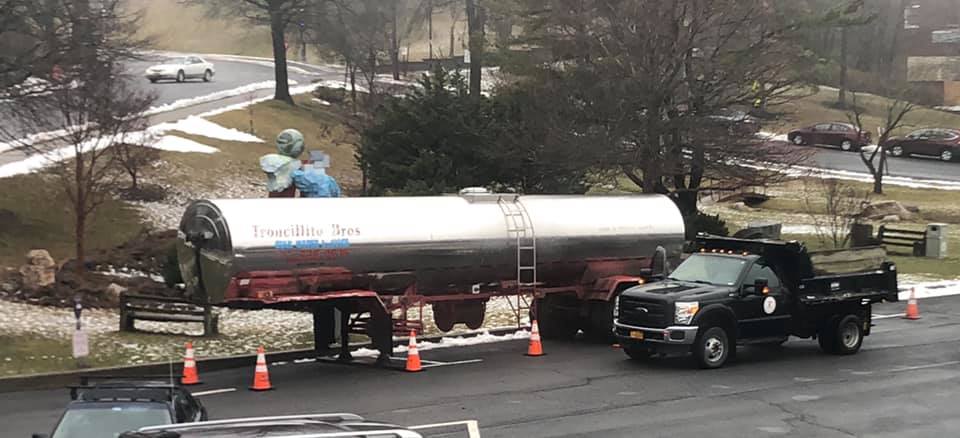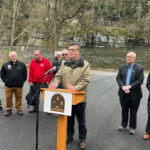NEW PALTZ – In the wake of this past week’s New Paltz water contamination situation, the Village of New Paltz has provided a list of frequently asked questions compiled by SUNY New Paltz Professors Megan Ferguson (Aquatic Chemistry) and Shafiul Chowdhury (Hydrogeology). Both have research and teaching backgrounds involving drinking water issues and the village put together the informal Q&A to address the most common questions.
- Why did this happen?
- The Village of New Paltz reports that they believe a contractor accidentally damaged an underground fuel line which began leaking when it was turned on for the winter heating season. That fuel line was 500 feet from one of the 4 reservoirs that the Village uses for water (along with the Catskill Aqueduct that goes to NYC), but it took several weeks for the oil to seep through the soil and contaminate the water in the reservoir.
- How long has my water been affected?
- The first reports of foul-smelling water began approximately a week ago. Since only a fraction of New Paltz water came from the contaminated reservoir, the problem was probably highly dispersed.
- I drank water right before the advisory came out…what are my risks? Most likely none.
- The 4 primary compounds that are (1) in fuel oil and (2) able to travel through the soil and into drinking water are benzene, toluene, ethylbenzene, and xylene. Maximum legal levels of these and many other contaminants in drinking water are called MCLs (maximum contaminant levels). The MCL for a given compound is chosen to make sure that no more than 1 in 10,000 (usually 1 in a million) people exposed at this level get sick after drinking 2 quarts of water at that level per day for 70 years. This is called chronic exposure – small levels over a long period of time. If you have a particularly compromised immune system, you might experience effects after a month or two of drinking water with the levels of chemical contamination that were suspected here.
- Also, note that petroleum compounds were not detected in ANY of the samples analyzed by New York State’s public health lab taken on February 13th after the system was flushed. This doesn’t mean that there was no fuel oil contamination, but that it was so low that it was below the legal drinking water limits. One caveat is that we can smell very low concentrations of gasoline and fuel oil, largely because many of the chemicals that make up these petroleum products readily evaporate into the air. So a sample that smells strongly of fuel oil now may not have a detectable smell or measurable levels of these compounds in a few hours.
- They say it’s okay to shower, wash hands and dishes, etc. – is it?
- There are multiple ways to be exposed to a harmful compound: ingestion (drinking/eating), inhalation, or skin contact. For the four compounds of interest here, ingestion is the most harmful. So even while the do-not-drink advisory was in effect, you have a much greater exposure to these compounds every time you fill up your car at the gas station than you would when performing the above activities.
- If it’s not a big problem, why did SUNY New Paltz close?
- It was a logistical problem. When classes are in session, the amount of water used by the Village of New Paltz nearly doubles. After the no-drink advisory took effect, people were being provided with potable water, but the ~3,000 students on campus who require both drinking water and food prepared with water would be too large to support by this approach.
- Now that the no-drink advisory is lifted, how can we be sure that the problem is fixed?
- The contaminated reservoir is no longer being used as a source of water. The village has flushed the water supply to make sure the contaminated water has been removed and the campus is doing the same.
- Why should I trust what the authorities are telling me?
- The New York State public health lab has now completed resampling and all samples had no detectable levels of petroleum compounds. Moreover, for this particular type of contamination (fuel oil), humans have a pretty sensitive odor threshold. No additional reporting of foul-smelling water will help to confirm when the problem is solved.








